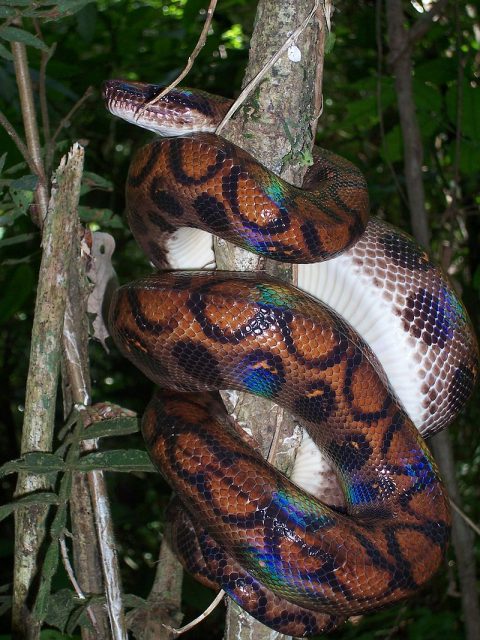Type the name of the breed you're looking for below
[wpdreams_ajaxsearchlite] Don't see the breed your're looking for? Click here and let us know!
Rainbow Boa
| Place of Origin and Range | This snake is endemic to Central and South America. |
| Description | This boa have a rich orange to orange brown ground colour with large dorsal spots outlined in dark brown or black, bordered above by black-edged crescents of pink or buff. |
| Morph Patterns Available | Yes |
| Adult Size | Can grow 5-8 feet(1.5 - 2.4 m) |
| Accommodation | A well ventilated rain forest( moss or loose earth to hold humidity) terrarium with lots of branches as thick as the snakes diameter for climbing with typical rainforest settings. High humidity 60-80%, and a large dish for bathing and soaking in to improve shedding. Always include a day basking spot at 80'F(27'C). Along with multiple hides. Minimum 2 x 2 x 4 feet for an adult. |
| Lifespan | Can live 12+ years |
| Feeding / Diet | Like most snakes, a Brazilian rainbow boa can eat mice, chicks, and rabbits depending on the size of your snake and the availability of feed. Snakes also like to eat tree frogs and lizards. |
| Breeding | With females producing an average of between 6 and 14 young at a time, sometimes even more. Litters exceeding these numbers are extremely rare. The gestation period, which is counted from the post ovulation shed, is approximately 100–120 days.The female will then give birth to young that average 15–20 inches (38–51 cm) in length. The litter size varies between females, but can be between 10 and 65 young with an average of 25, although some of the young may be still-born or non-fertilized eggs known as "slugs". The young are independent at birth and will grow rapidly for the first few years, shedding regularly (once every one to two months). At between 3–4 years Boa constrictors become sexually mature and will have reached the adult size of between 6–10 feet, although they will continue to grow at a slow rate for the rest of their lives. At this point they will shed less frequently, approximately every 2–4 months. |



